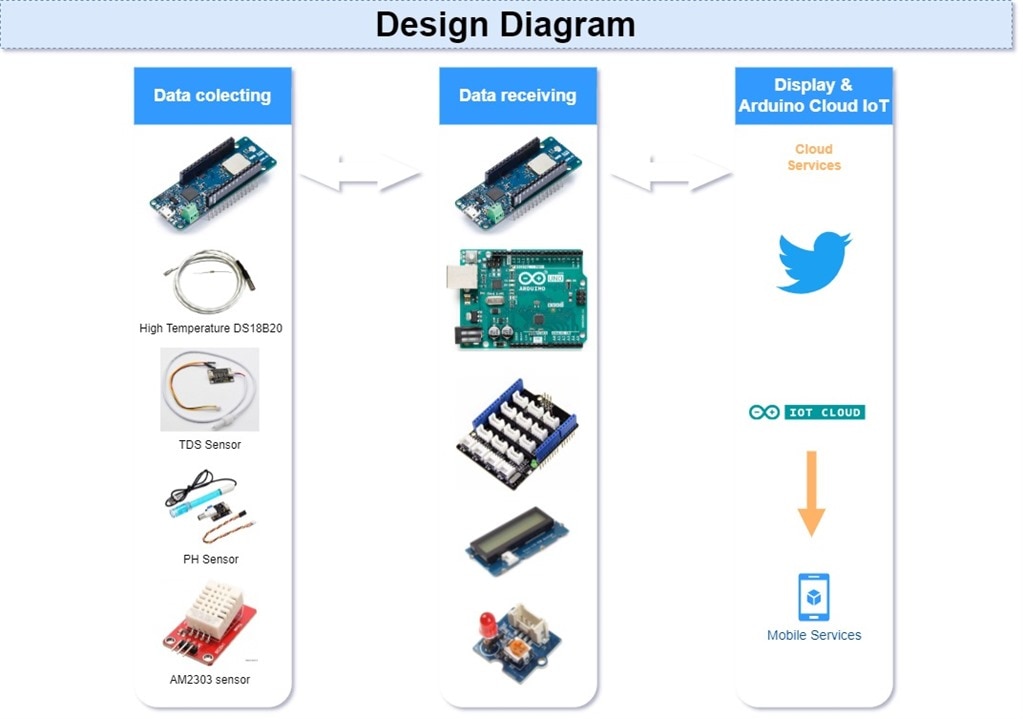
Hi all !
Happy New Year to all. Hope everyone is safe and sound.
Today, I'm presenting in more detail my design for the challenge.
NOTE: This will be updated with the links to the respective blog entries when done.
Project
This project is comprise of 3 parts, each one with its own set of challenges
- Data collecting
- Data receiving
- Data sharing/display
Here's a diagram of the entire design

It will be using most of the Kit hardware and a few of my own.
I'm going to write about all of them in separate entries, but here's a brief summary:
Data collecting
In data collecting, we will gather all the values from the monitored environment and send them via LoRa to the receiving end.
Will will be measuring:
- Water temperature
- Water TDS
- Water PH
- Ambient Temperature and humidity
All of this will be inside of the Hammond enclosure with the transparent lid. The cables will be outside by means of one of the Hammond cable glands.
The following blog entry details this design
Data Receiving
The other Arduno MKR 1300 WAN will be receiving the data and will be doing three things:
- Send data to the Arduino IoT Cloud
- Send data to Twitter
- Send data to the Arduino UNO to be displayed on the LCD RGB and any warning on the LED
The received data will be here analyzed and watch for values outside the normal values.
[The following blog entry explains the water parameters that we are we looking for and why]
The following blog entry details this design
Data sharing
Although it's described above, this deserves its own blog post for the detail on how it's sent to both Arduino IoT Cloud and Twitter.
[The following blog entry details this design]
Happy New Year everyone.
Stay safe

Top Comments
-

christophesky
-
Cancel
-
Vote Up
0
Vote Down
-
-
Sign in to reply
-
More
-
Cancel
Comment-

christophesky
-
Cancel
-
Vote Up
0
Vote Down
-
-
Sign in to reply
-
More
-
Cancel
Children